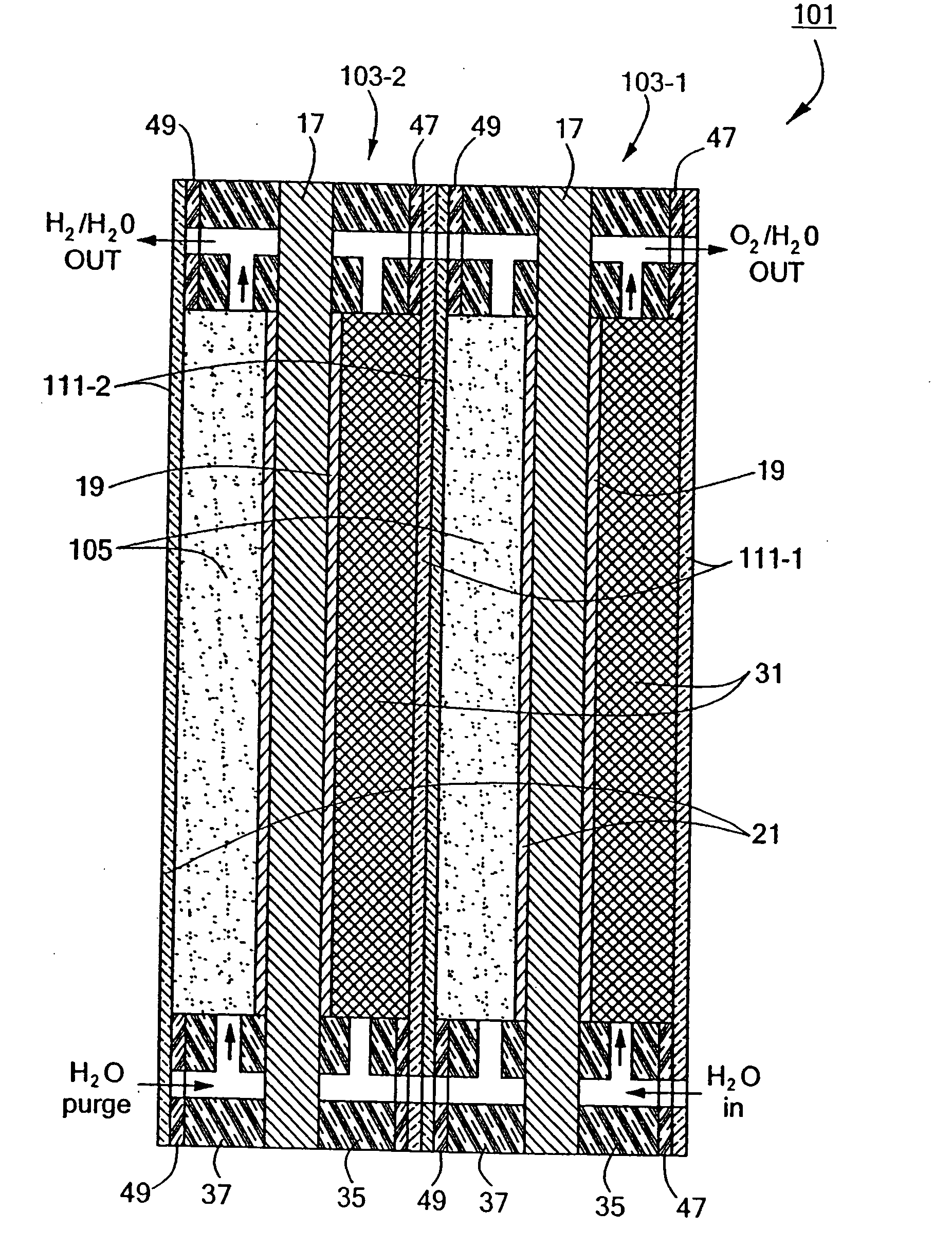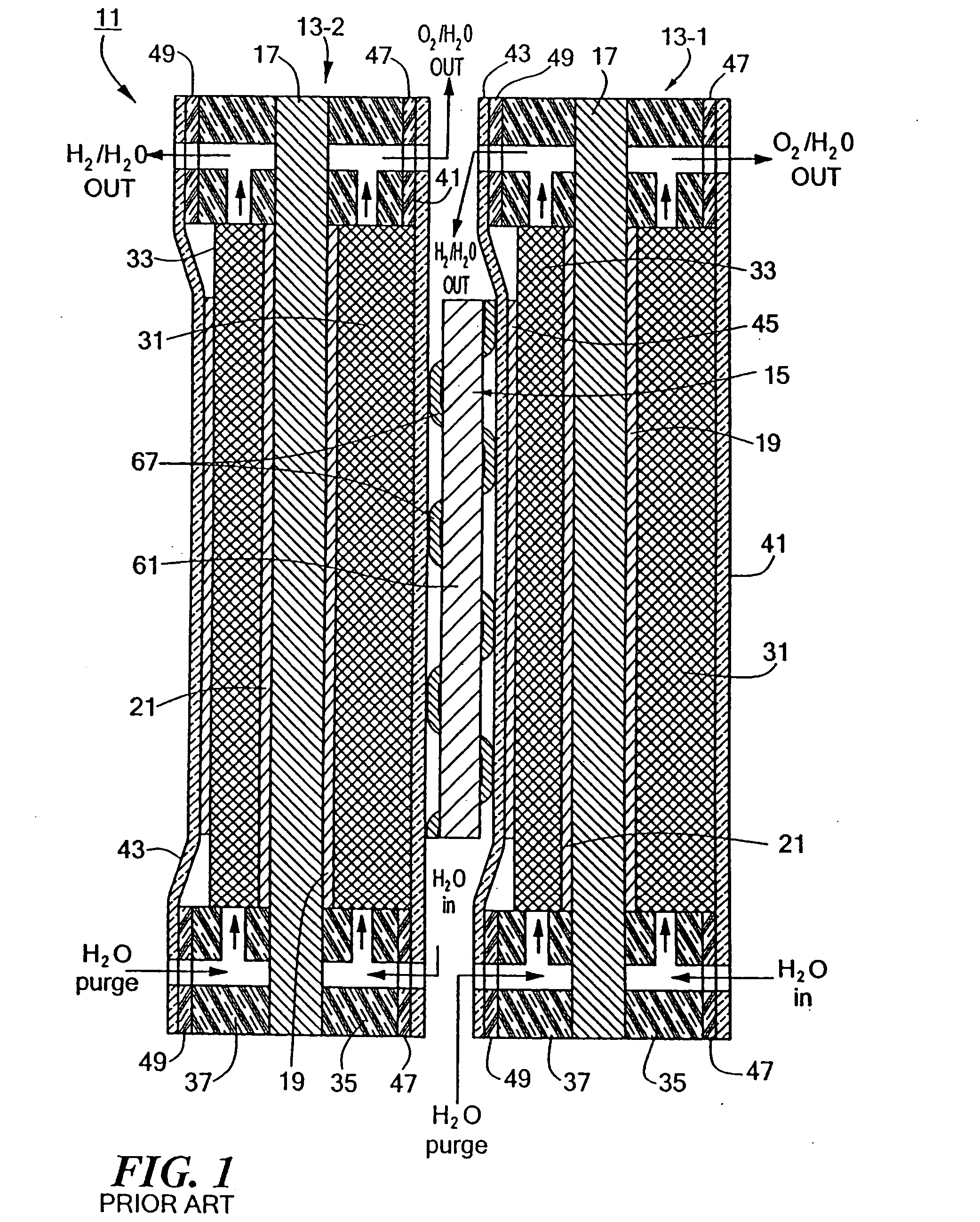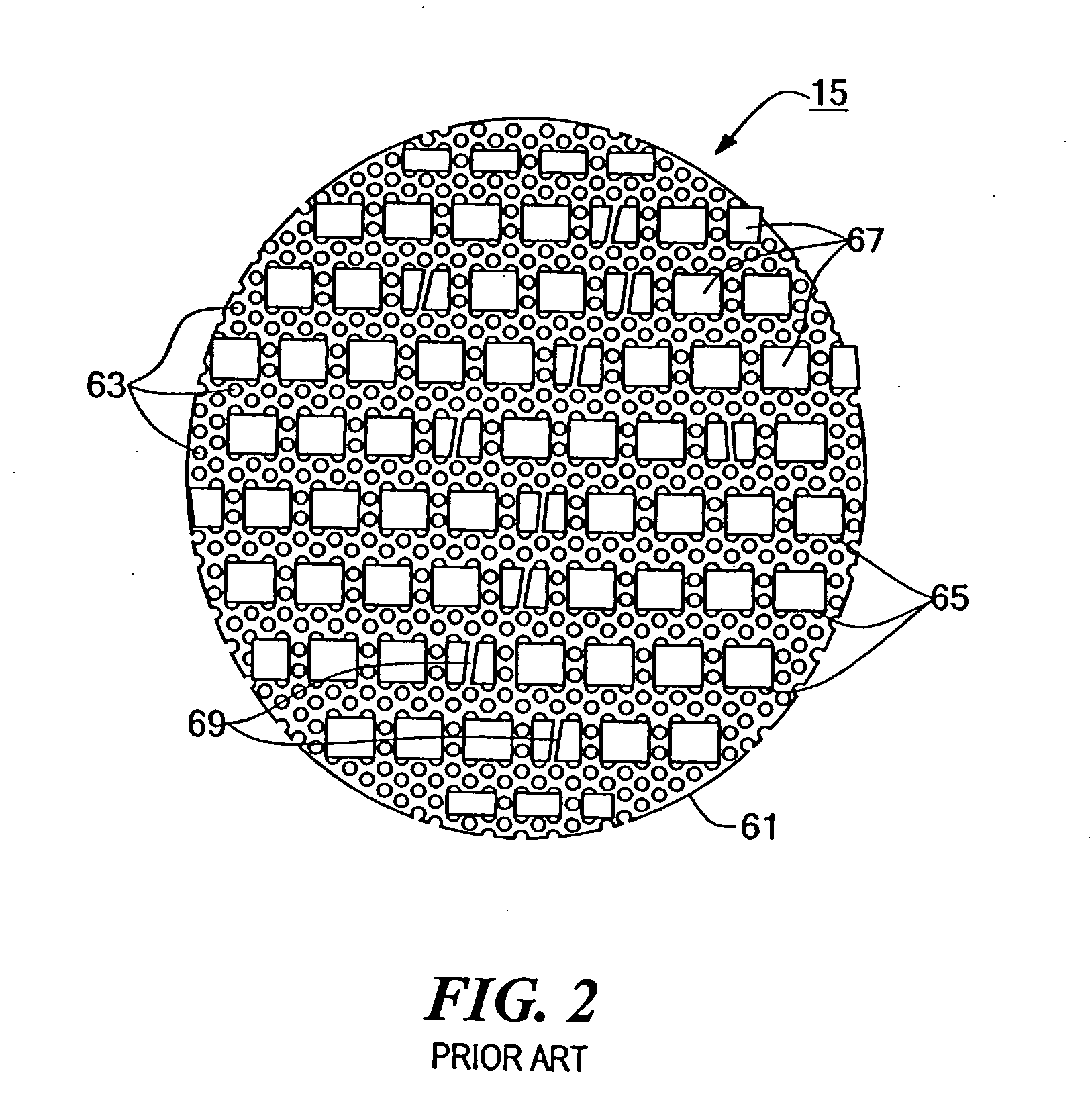Proton exchange membrane (PEM) electrochemical cell having an integral, electrically-conductive, resiliently compressible, porous pad
a technology of proton exchange membrane and electrochemical cell, which is applied in the field of new pem electrochemical cell stack, can solve the problems of rarely achieving uniform contact pressure over the active area, adding weight and expense to the stack, and not being optimal for many such applications. , to achieve the effect of high porosity
- Summary
- Abstract
- Description
- Claims
- Application Information
AI Technical Summary
Benefits of technology
Problems solved by technology
Method used
Image
Examples
example 1
[0075] Three different compression pads 105 (of the type wherein a stack of carbon fiber papers are bound together with a thermosetting binder) having respective densities of 0.44 g / cm3, 0.48 g / cm3 and 0.55 g / cm3, respective thicknesses of 0.085 inch, 0.084 inch and 0.079 inch, and each having a diameter of 5.6 inches were tested for both spring rate and compression set by incorporation into three corresponding individual cells 103. The results of said testing are graphically depicted in FIGS. 5 through 7, respectively. As can be seen, the most desirable pad 105 of the three tested was the pad having a density of 0.55 g / cm3 since it resulted in the most modest range of deflection in the pressure range of interest (200 to 500 psi), with negligible compression set or structural degradation.
example 2
[0076] The electrolyzing performance of a cell 103 comprising a pad 105 (of the type wherein a stack of carbon fiber papers are bound together with a thermosetting binder) having a density of 0.55 g / cm3 and a diameter of 1.25 inch was tested as a function of the differential between the hydrogen pressure and the oxygen pressure (oxygen being generated at ambient pressure). The results are shown in FIG. 8. As can be seen, there was essentially no change in performance for differential pressures up to 400 psi, indicating good spring rate and no compression set. It is believed that polytetrafluoroethylene impregnation of the pad would further enhance structural integrity and spring rate, without sacrificing other essential properties.
example 3
[0077] The electrolyzing stability of a cell 103 comprising a pad 105 (of the type wherein a stack of carbon fiber papers are bound together with a thermosetting binder) having a density of 0.44 g / cm3 and a diameter of 1.25 inch was tested over a 12 hour period at a differential pressure of 400 psi. The results are shown in FIG. 9. As can be seen, the cell 103 remained very stable over the entire period in question.
PUM
| Property | Measurement | Unit |
|---|---|---|
| Fraction | aaaaa | aaaaa |
| Pressure | aaaaa | aaaaa |
| Pressure | aaaaa | aaaaa |
Abstract
Description
Claims
Application Information
 Login to View More
Login to View More - R&D
- Intellectual Property
- Life Sciences
- Materials
- Tech Scout
- Unparalleled Data Quality
- Higher Quality Content
- 60% Fewer Hallucinations
Browse by: Latest US Patents, China's latest patents, Technical Efficacy Thesaurus, Application Domain, Technology Topic, Popular Technical Reports.
© 2025 PatSnap. All rights reserved.Legal|Privacy policy|Modern Slavery Act Transparency Statement|Sitemap|About US| Contact US: help@patsnap.com



